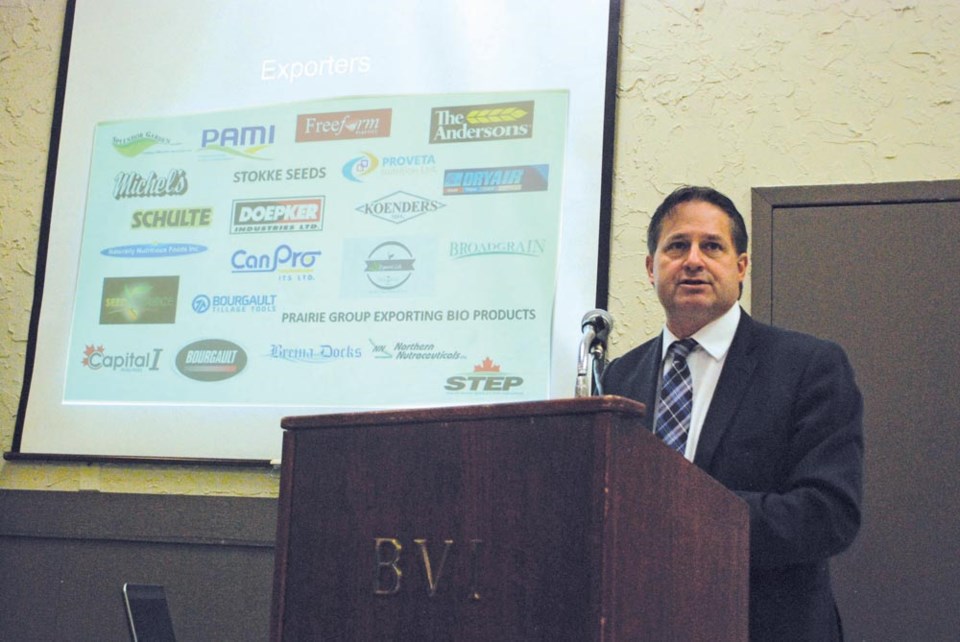President and CEO of Saskatchewan Trade and Export Partnership (STEP) Chris Dekker was in Humboldt on June 12 for the Humboldt and District Chamber of Commerce luncheon to talk export markets in the Humboldt area and the province.
One in three to one in five Saskatchewan employees are dependant by export markets, including many local businesses that are making their own mark on international markets, says Dekker.
The Saskatchewan export story is one of recent success with international trade becoming a major economic player in the province going back only 10-15 years.
“Things have changed significantly. Now, when we go abroad, not only do they know where Saskatchewan is but they can pronounce it.”
The Chinese middle class is growing by the entire population of Canada on an annual basis and they need three things that Saskatchewan is known for, says Dekker; food, fuel, and fertilizer.
“We say we have not what the world needs but what the world wants. We’re exporting beyond our borders and we’re really good at it.”
In 2017, Saskatchewan exported $28.95 billion dollars worth of goods and services. While this is down slightly from 2014-2015 because of oil and potash commodity prices, this is still a strong showing for Saskatchewan companies. Compared to the rest of the country, Saskatchewan is the fifth highest exporter beaten only by Ontario, Alberta, Quebec, and British Columbia.
However, on a per capita basis, Saskatchewan holds the top spot, says Dekker.
“We’re only 1.2 million people. Exports per capita, we’re number one among the provinces by a long shot. CEOs at STEP and others have been able to say that, when it comes to exports, we punch above our weight.”
Even with a drop in oil and potash prices, Saskatchewan has a diverse list of products that are shipped around the world, including canola seed, wheat, lentils, canola oil, peas, and uranium.
This diverse list of Saskatchewan commodities also tells a story about how the markets have changed for the better for Saskatchewan markets. Canola seed and canola oil are two of the biggest success stories, says Dekker.
Exports for canola seed have increased 351 per cent over the last 10 years while exports for canola oil have increased by 4,142 per cent over the past 10 years.
Even where we export is a diversified list, says Dekker, with $16 billion worth of commodities going to the United States in 2017 but accounts for only half our export market, Around $3.5 billion goes to China, with $1.1 billion going to India and Japan. The other six major Saskatchewan export countries all fall between $326-779 million worth of Saskatchewan commodities in their markets. And that is just the top 10, says Dekker. Saskatchewan ships commodities to 150 countries around the world.
So how are recent political challenges going to impact the Saskatchewan economy?
The future of the North American Free Trade Agreement, Comprehensive and Progressiver Agreement for Trans-Pacific Partnership, and Canadian-European Union Comprehensive Economic Trade Agreement have all been or are up for debate and whether the changes are good or bad, Saskatchewan markets and export potentials have been and will be impacted in some way.
Having Saskatche-wan’s export diversity and our relationship with the United States, we are in a better position than some provinces when it comes to changes to export policy with our southern partner.
Ontario, for example, has a much more in depth trade relationship with the United States with around 70 per cent of their exports going to the United States, says Dekker.
No matter the changes coming our way, Saskatchewan exports still look strong and STEP is there to help, he says.




